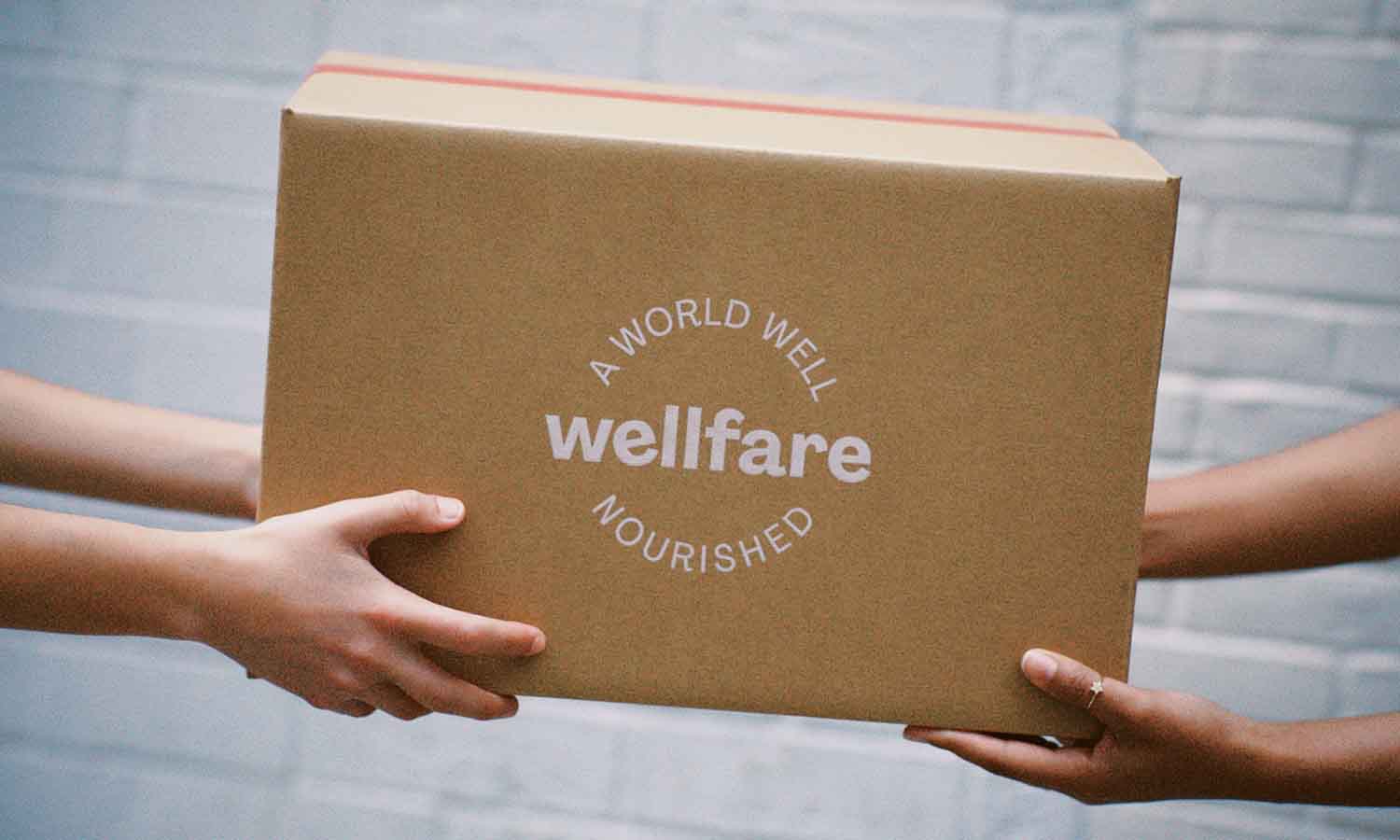In New York City, a nonprofit is distributing pantry items to more than 2,000 individuals through a new food box subscription model. Motivated by efficiency and resiliency, Wellfare hopes to develop a food pantry paradigm that better addresses the needs of those experiencing food insecurity.
According to The City of New York’s 2021 Food Metrics Report, nearly 13 percent of all New York City residents are food insecure. While New York’s food pantries and soup kitchens provide relief, several hubs faced food shortages or closed down completely during the pandemic. Amid these challenges, entrepreneur Cole Riley saw a chance to make these operations more resilient, efficient, and customer focused.
Riley launched Wellfare in 2020 after heading the largest private COVID-19 relief effort in New York City. Founders Give, a food donation pipeline for medium to large food and beverage companies, delivered upwards of 2 million products to support more than 100,000 healthcare workers and patients across hospitals suffering from food shortages. After the campaign’s success, Riley knew he could apply the same logistics to address food insecurity in New York City’s low-income neighborhoods.
“You need to completely flip the model because it’s not working. The food pantry model is based on the old bread lines of the Great Depression, and we’re still doing that in 2022,” Riley tells Food Tank.
To identify potential subscribers, Wellfare works with the New York City Housing Authority (NYCHA) to reach public housing communities.
Families can pick up their boxes of nutritious pantry staples from popup distribution sites, located in the community, each month. And because they are subscribed to the service, they are guaranteed a box, regardless of the time they arrive.
Currently, Wellfare serves 700 families across the neighborhoods of East Harlem and Bushwick. Through the onboarding process, which includes a detailed questionnaire, Wellfare gauges the user’s taste preferences, health concerns, grocery spending habits, and household profile. Drawing from this input, the organization can also adjust procurement month to month to better reflect their subscribers’ needs.
A typical box contains around US$200 worth of snacks, drinks, pantry staples, and ready-to-eat meals. Wellfare selects products that contain less sugar, salt, and fat content than their conventional counterparts. The products also contain functional ingredients that add nutritional value. Examples include protein-rich chickpea pasta or grass-fed beef jerky sticks. This approach distinguishes Wellfare from pantries that prioritize produce or other cold items with a shorter shelf life.
“We have a more practical approach to eating that’s more in line with the common consumer, whether they’re an affluent consumer or a low-income consumer,” Riley explains. “People are buying packaged products–we just have healthier versions.”
Wellfare’s utilization hovers around or over 90 percent. Riley tells Food Tank, “Our biggest success metric right now that we track is utilization: are people eating the products? It’s a question that pantries are afraid to ask because they don’t want to know the answer. They know what it’s going to be—it’s going to be staggeringly low.”
Riley’s model emphasizes flexibility and minimizes barriers for brand participation. The nonprofit accommodates a brand’s capacity to donate, whether it be a one-time donation or months-long commitment. Wellfare also capitalizes upon a company’s fluctuating inventory, allowing them to donate mislabeled or excess items and products nearing their sell-by date.
To power Wellfare’s operations, the organization leverages a network of volunteers. These volunteers pack boxes full of the month’s selections at Wellfare’s warehouse in Queens.
Currently, Wellfare survives off funding received from the food and beverage industry. Some of the nonprofit’s largest supporters are The Coca-Cola Foundation, The Joy in Childhood Foundation, and Whole Foods Market. With additional funding, Riley hopes to expand the box’s reach to include even more families and neighborhoods. By the end of 2022, the goal is to serve 5,000 families across East Harlem and Bushwick. Riley envisions the service spreading nationwide after firmly tackling New York.
In the future, Riley sees opportunity for the existing model to evolve into a physical store. The grocer can sell food, some of which would be donated, at varying price points to customers in need. It would offer “better products, better service, and wraparound value,” according to Riley. Comparable to high-end stores, this “hybrid omni-channel grocer” would enforce nutrition standards and create an elevated experience. Riley tells Food Tank, “That’s the long-term goal. That is the food insecurity killer: It’s a grocer.”
Articles like the one you just read are made possible through the generosity of Food Tank members. Can we please count on you to be part of our growing movement? Become a member today by clicking here.
Photo courtesy of Wellfare













